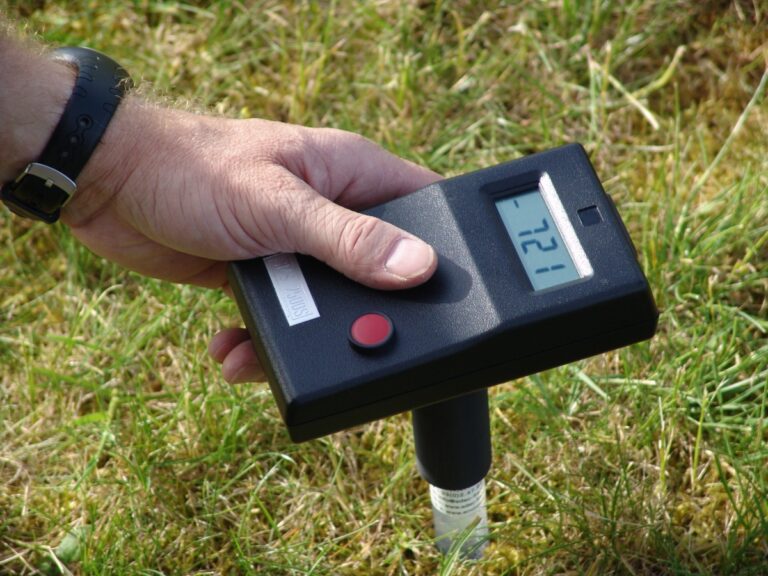HAND HELD PRESSURE SENSOR FOR SMS TENSIOMETERS - SMS 2500S

What do I measure ?
The total soil water suction in the tensiometer tube (also known as soil water potential or hydraulic charge)
APPLICATIONS
AGRICULTURE
- Precise management of irrigations.
- Management of adjusted water stress levels for seed production.
AGRONOMY, ENVT
- Studies on water bulbs in soils.
- Water stress management for modeling.
- Checking water potential levels before starting a soil solution sampling campaign.
Following water percolation periods.
HYDROLOGY
- Water potential measurements in unsaturated soils.
- Soil water caracteristic curves.
- Studies on water flows : percolation…
The measuring technique with the SMS 2500S electronic pressure meter consists in piercing through a silicon bung closing a tensiometer, by means of a hypodermic needle, itself connected to a pressure transducer (or vacuumeter). This type of measure, both very precise and very economical (a unique appliance can be used on a great number of tensiometers) is particularly practical for all users of tensiometric technics in general. This appliance is easily transportable in its small bag and will allow the user to envisage all field experimentations outside of the laboratory. It is obvious to use such a system in agronomy or agriculture for managing water use : determination of irrigation conditions, of the amount of water needed and of the best moment to irrigate. The knowledge of water potentials is also very important when a control of groundwater ressources must be done.
The measuring principle of this system is both simple and gives very accurate readings. It consists in measuring the vacuum created in an airtight system filled with water which equilibrates with the soil through the porous ceramic.
The porous ceramic cup is glued to the bottom of a hollow PVC tube which will be set into the soil to measure its water potential. The water saturated ceramic will be linked to the plastic tube full of water (sort of water container) which is also linked by a capillary to a mercury reservoir.
Key Advantages
ACCURATE
EASY TO USE
ECONOMIC (one sensor can be used on a great number of SMS tensiometers)
Disadvantages
No monitoring
TECHNICAL CHARACTERISTICS
Measuring range : 0 Hpa à -999 Hpa.
Accuracy : < 2% of full scale.
Pressure sensor : Differential piezzo-resistive sensor
Null Offset : adjustable by user.
Calibration : a calibration certificate is supplied with each device.
Measurement : by hypodermic needle fixed in a DELRIN cylinder. This cylinder is adapted to all standard tensiometric tubes . (21,5 mm < Ø < 23 mm).
Works also : for the combined tensiometer & lysimeter, ref. Tensionic.
Display : by LCD display. Direct readings of the measured value in Hpa (or mbar).
Power : dry cell 9 Volts 6LR61 or PP23 type.
Autonomy : more than 3 years (when using press-button) / less than a week if the device is left on / a year and a half if both switches are used.
Electrical protection : electronic system against reversal polarity.
Warning signal for low batteries (on LCD display).
Temperature compensated: 0°C to + 50°C.
Disturbance due to the air volume contained in the sensor : < to 5 Hpa for an air height equal to 20mm .< 10 Hpa if the air level is equal to 10mm.
Dimensions : 145 x 80 x 117 mm
Weight : 185 grammes.
Operating temperature: – 5°C to + 50°C
Storage temperature: -10°C to + 60°C
Waterproof: WARNING , this equipment is not waterproof.
You also need

Tensiometer tubes which must be placed into the soil, ref. SMS 2000 or the combined tensiometer &lysimeter, ref. Tensionic, ormicrotensiometers with flexible tubes, ref. SMS 2000S . An auger to place the tubes into the soil, ref. STM 21600
What is the autonomy of the equipment ?
The amount of energy used by the SMS 2500S meter for each measurement is very low. Thus, the battery should last at least one year.








